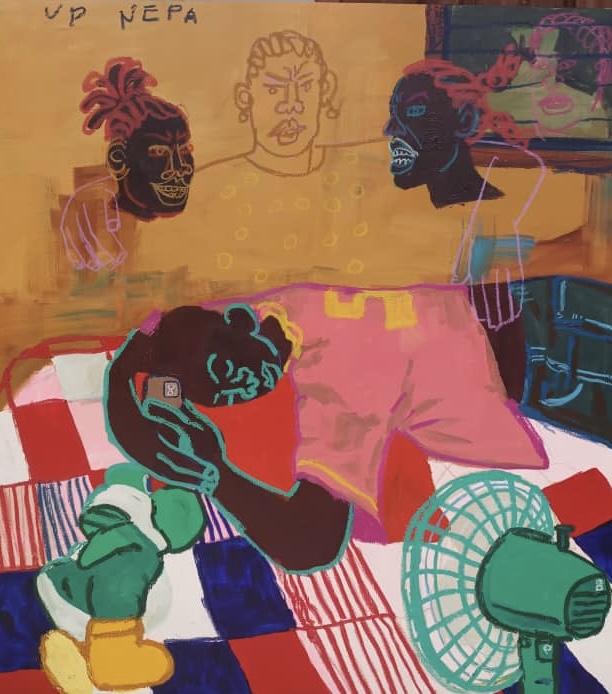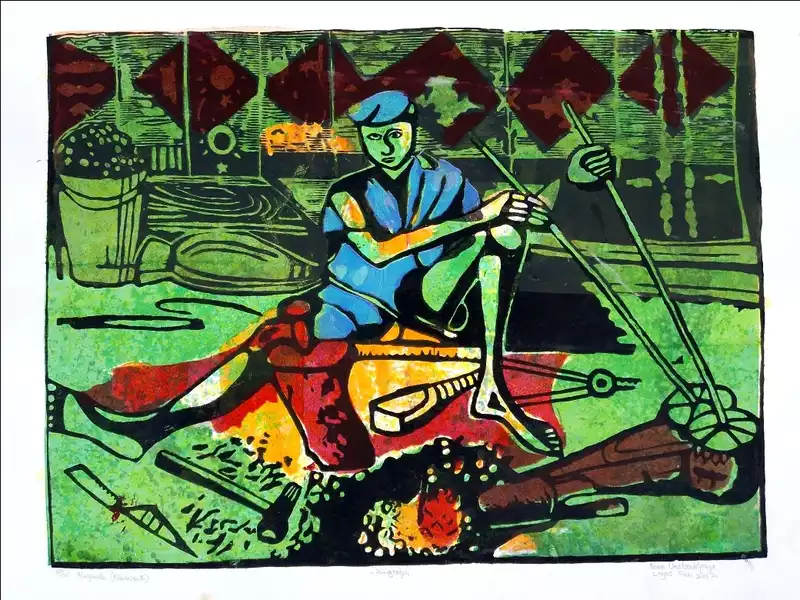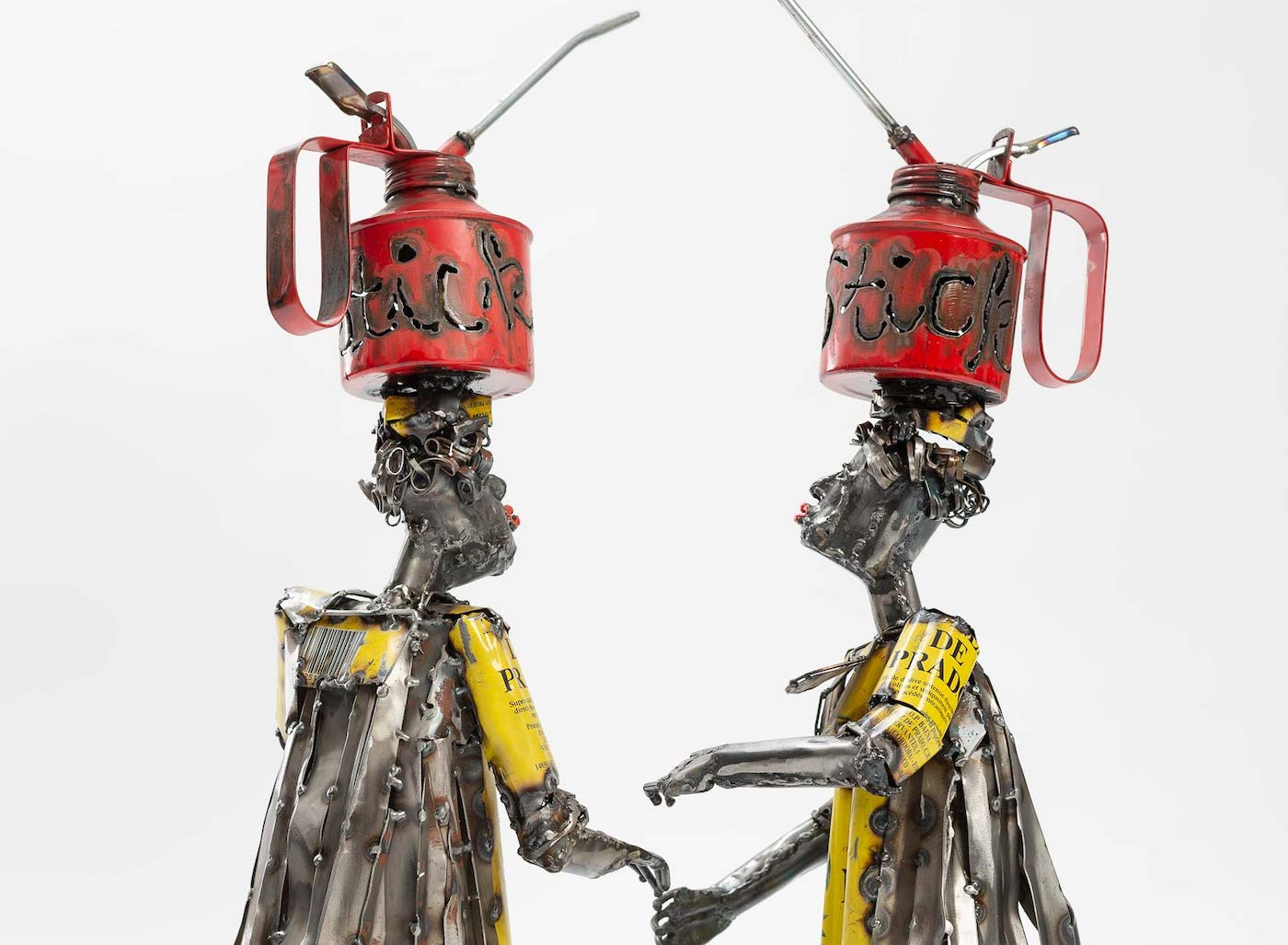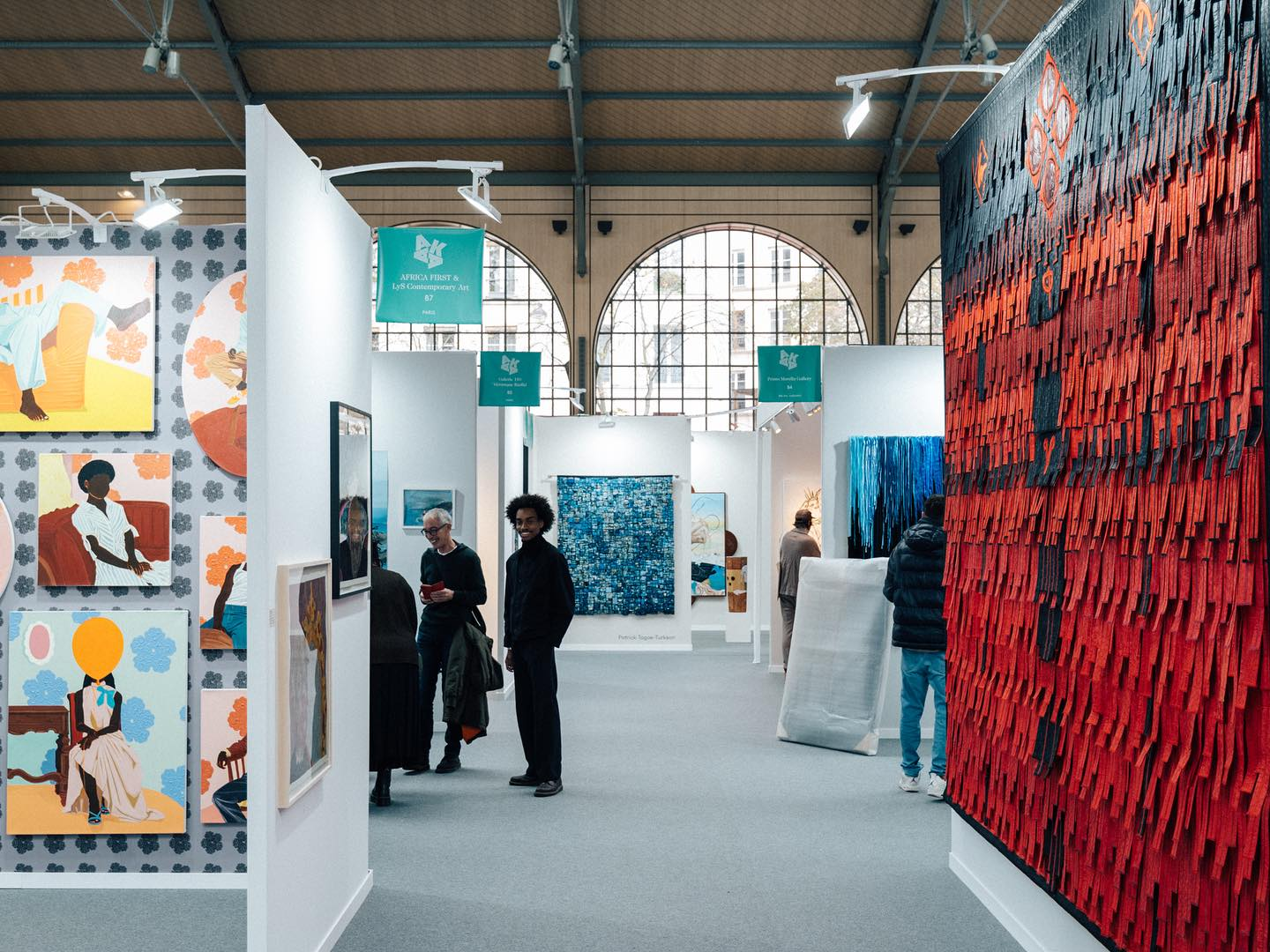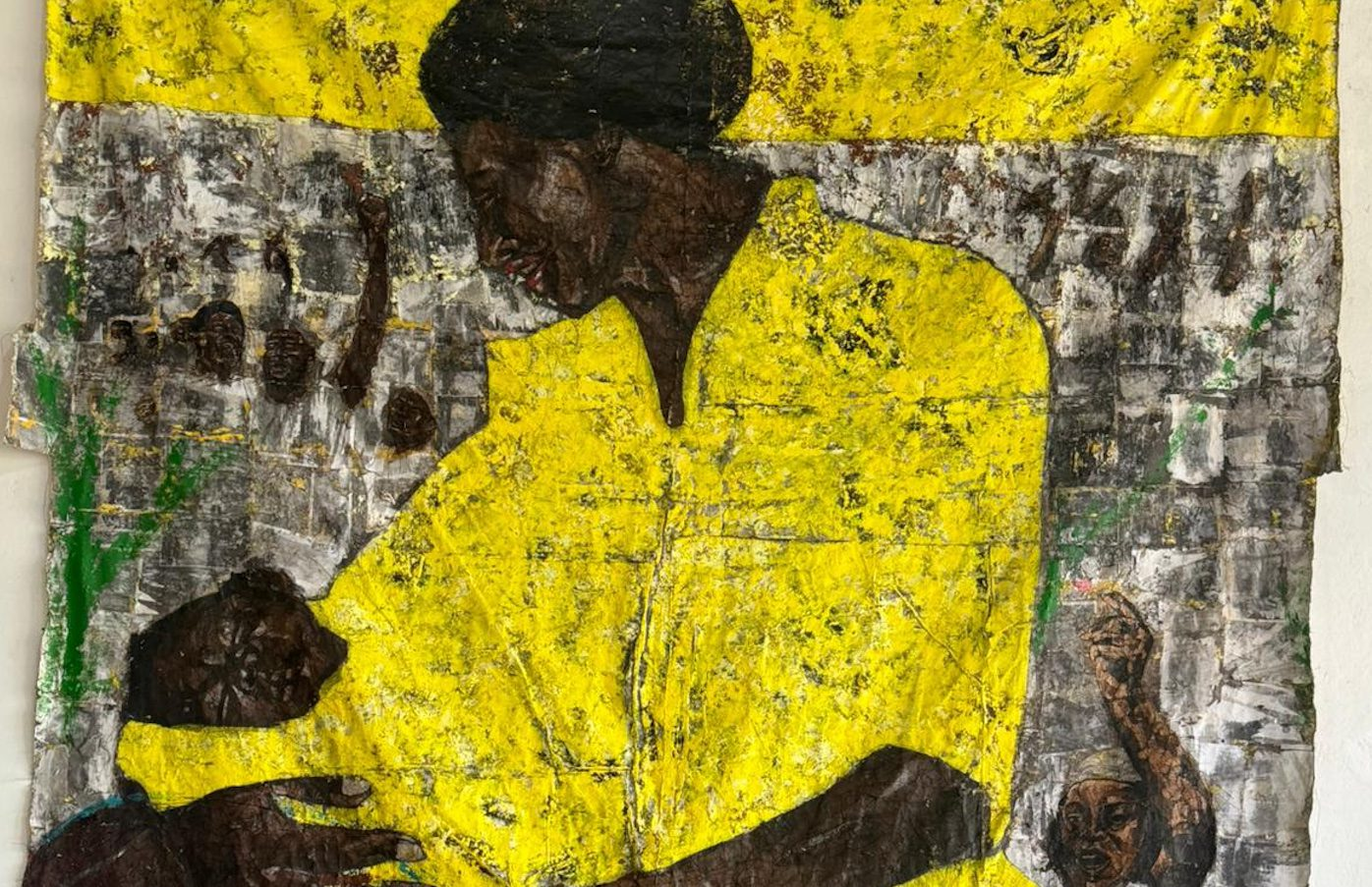Musa Ganiyy is imitating everyday life, a sketch at a time, as he visually journals his personal experiences in his work. His works are visual documentation of human interaction with their environment. Through his use of varied artistic mediums, Ganiyy’s observations show how seemingly mundane issues can be linked to larger problems.
Musa Ganiyy (b. 1993) is a Nigerian artist living in Lagos. Through his use of varied artistic mediums, ranging from minimalistic compositions to compelling portraits, colourful landscapes, and conceptual abstracts, Ganiyy explores space, movement, emotions, and memory. In his practice, he highlights nostalgic reflections of body movement and noticeable actions from memory.
In a conversation with Omenai, Musa Ganiyy talks about his documentary-driven practice, his process of working on a new project and how he is inspired by Van Gogh.
Tell me about your art.
Musa Ganiyy: My art, I would say, is documentary-driven. My work is just me journaling, trying to give narration to my immediate environment, and what it is to be a young artist living in Lagos or anywhere I find myself. It’s a documentation of my life experiences.
How did you get into visual arts? And how did you decide on painting as a medium of expression?
MG: It has always been art for me. Going to the University of Lagos, there was just no other thing that I wanted to do than art. When I was a child, I would imagine myself working for Marvel Comic Books or any of the other independent comic books, not knowing what that kind of world entailed. The University of Lagos changed my perception of what it meant to be an artist, as I specialized in certain areas such as graphic design, painting, ceramics, sculpture, and textile design. But I didn’t even study painting in school, I graduated as a Graphic Designer. While doing that, I came up with digital illustrations on my laptop. I didn’t quite fancy what painting was about in school because of all these weird rules around it as the lecturers wanted us to paint a certain way. There just wasn’t any room for alteration.
After school, I worked with some media houses. It was during COVID that I decided on painting as a medium. I’d gone to this exhibition where I met a friend, Osione, who is kind of like my mentor now. We worked with pastels and I just kind of saw that as a form I hadn’t, you know, really worked with before. Then I started using watercolor to paint because of the fluidity of colors and tone. Post-COVID, I had found another way I was most comfortable with in painting. Since I was using watercolors, one thing I knew was that I wasn’t good at registering the subjects colors in the shades of brown. I decided to use either a very dark blue or very dark purple instead. And I was okay with that. I just wanted it to be as illustrative as it can be — to make it as cartoonish, original, and as figurative as it can be. Later I was like, ‘Let me switch up on watercolors and let me use acrylic paints.’ I knew that I wanted to journal with my paintings and I would have to work with storytelling. I watch a lot of movies & I knew I wanted to paint like it was a movie scene.
Your work, which is often comical and satirical, tackles social issues while imitating the everyday life of your subjects. What are the main themes you seek to explore in your paintings?
MG: I don’t usually set out with the intention of addressing a certain issue in my work. Like when I journal, I deliberate on the things that worry me. It starts with my personal experience in the society. Then the experience talks about this issue. In my last project, I explored the hurdles Nigerian creatives face every day, like a noisy neighborhood, generator sounds, electricity issues, and the high rent rate. You can’t say, ‘Oh, okay, I’m going to just zone in and create.’ No, there’s always something to disturb you. If the system worked, these are challenges I think are avoidable. For that project, I was like, ‘You know what? I was affected by this, and this is what I have to say about this particular topic.’
Who were some of your earliest artistic influences?
MG: Vincent Van Gogh. Always Vincent Van Gogh. Because of the way he used colors and the way he expressed himself on his canvas, It seems to me like a person journaling about his day, writing a letter to his brother, and painting about the things he has described in the letter. Like where I am currently—mentally, or what my immediate environment looks like. That’s why Van Gogh’s work has always resonated with me. Whenever I need inspiration or just want to go back to the basics, it’s Vincent Van Gogh.
Considering your year with Windsor Gallery alone, you seem to always be in solo and group exhibitions. How are you able to work project after project?
MG: Usually I try to make ten small works in a month. That way there’s enough work to go around. And because it’s journaling, there’s always something to say. For my most recent body of work “Wired and Unwired,” I was just painting and trying to piece things together. I started with the ‘Agents of Light’ painting, which featured two Nepa officials. I kept having issues with electricity at home as these Nepa officials would come to fix the light and it would go bad again. Last year in July, Windsor Gallery reached out to say, ‘Oh, we want you to have a solo’ and ‘When would you want to do it?’ We decided on this year. In January/February, I knew I wanted to do this project with 20 artworks. It would be like 10 large works and 10 small ones. The 10 large works would focus on the story itself while the 10 small works would be portraits exploring certain elements in the story. It wasn’t even a fully thought-out decision. As I worked on the paintings, I gave the gallery updates. Soon, I started with the titles to highlight the aspects of this light issue that I wanted to explore. Fast forward to this year, I had 20 works and we showed 12 of them in Windsor Gallery Abuja. Then we showed 6 of the works in Lagos before we moved some of the works from Abuja to Ivory Coast to show with the newer works I had made in Ivory Coast. That’s how I’m able to show as much as I can.
Tell me about your process of creating a new work
MG: The idea, first. Then sketching. When I’m satisfied with the sketch, I prime my canvas, transfer it to the canvas, and paint. While I paint, I’m also altering the idea. Like, does this color work? Do I want to represent this person as an outline instead? Or do I want to represent this person fully? What will my focal point be?
Let’s say I want to talk about these guys that bring water to us with their trucks. How do I talk about them in a non-cliché way? I come up with multiple sketches from different angles until I find what works. A painting is never truly finished for me.
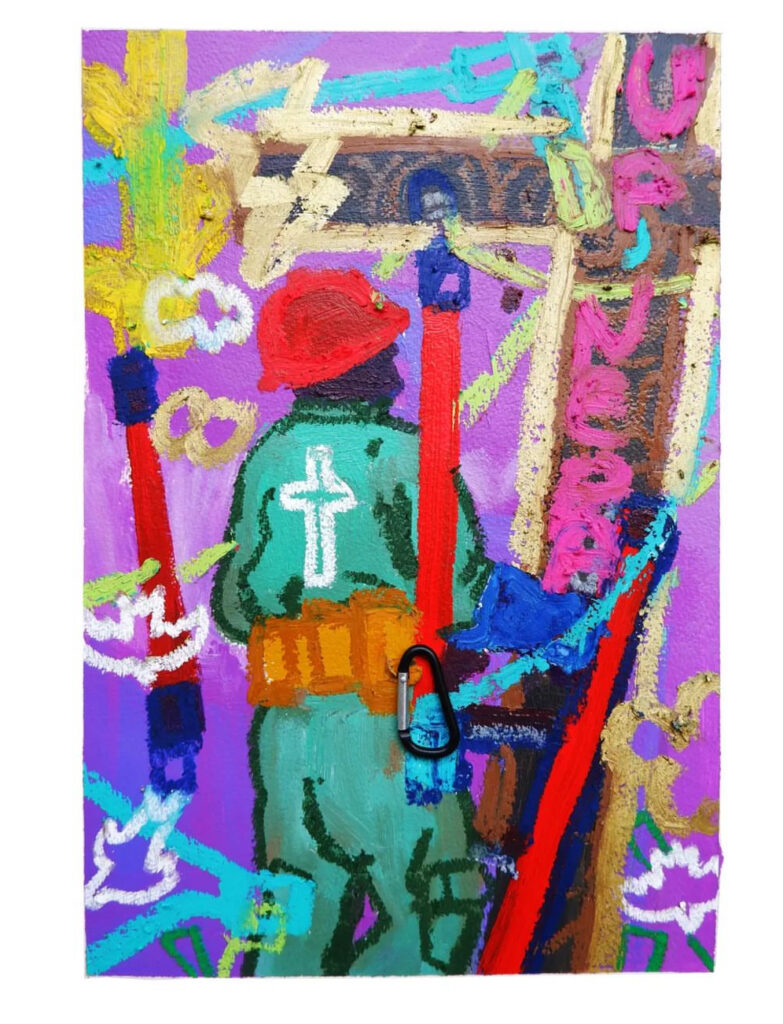
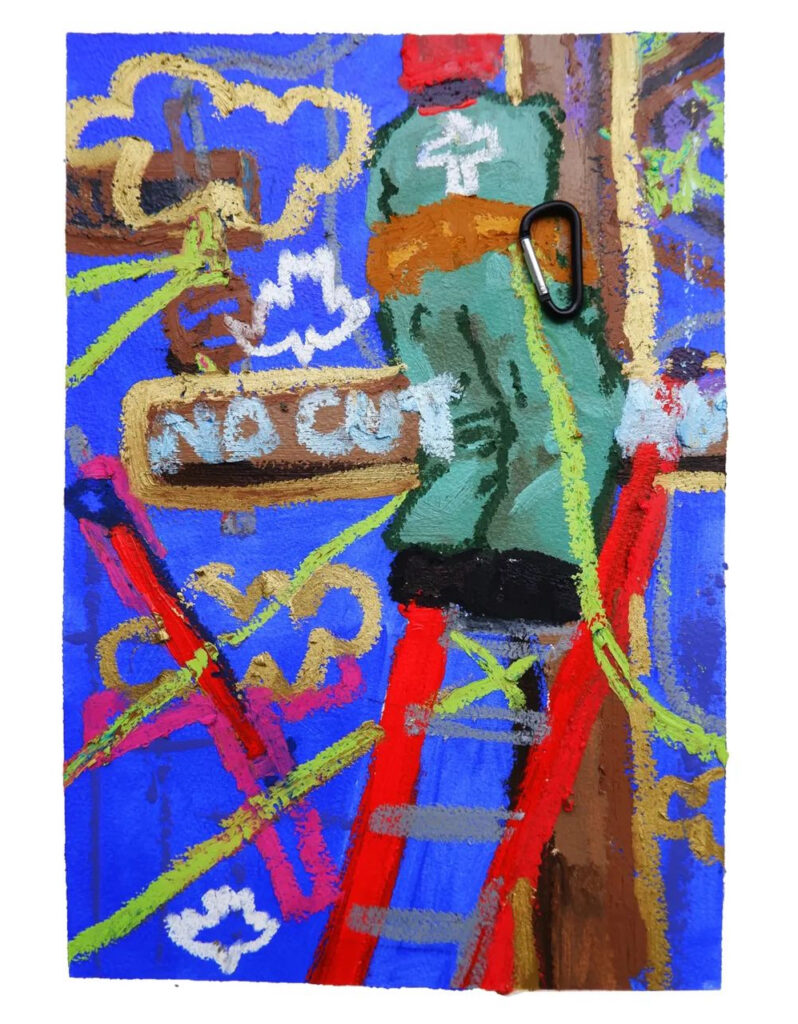
Agents of Light (Diptych), Gouache, watercolour and oil pastels on paper, 42 x 29.7cm, 2023. Courtesy of the artist.
What are you working on currently?
MG: I’m working on illustrations for a film that a friend of mine made and wants us to collaborate on. There are certain elements of the film where as the film is playing on one screen, the illustration is showing on the next screen, and there’s a narration going on. That’s supposedly the final outlook of the work. Currently, I’m sketching the illustrations for his approval.
Can you share in detail the phase you are at right now in your practice?
MG: I’m still very much at the start of my artistic career. I’m still learning. I’m still gathering knowledge and skills, and just trying to see what other mediums or art forms I can play with. Because that’s the most important thing to me: experimenting.
Iyanuoluwa Adenle is a Nigerian art writer, essayist, and poet based in Lagos. She is currently the head writer at Omenai. Adenle has contributed to a number of art publications, including Tender Photo, Art News Africa, Pavillon 54, and Omenai.

